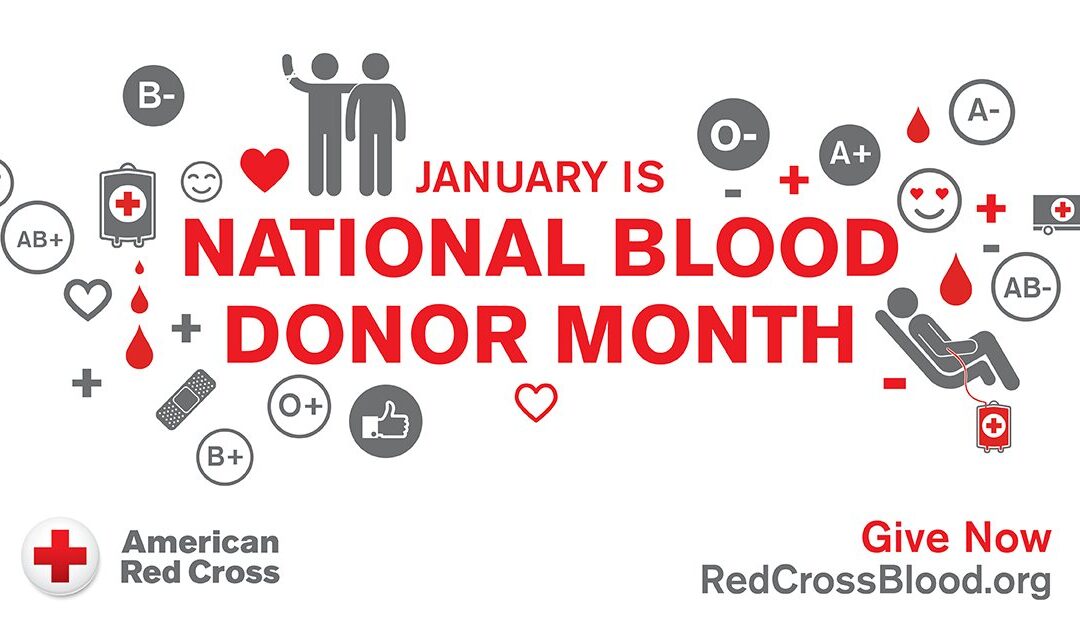In honor of Blood Donor Awareness Month we take a moment to thank the people who donate a half hour of time (with the actual donation time taking about 10 minutes) every 56 days to literally save hundreds of lives.
In the United States about 37 percent of the population could donate blood, but less than 10 percent actually do. The facts are that one pint of blood or each donation can save up to 3 lives. Of hospitalized patients, one in every seven will need blood and someone somewhere in the United States will need blood every 2 seconds. About 4.5 million Americans will need a transfusion each year. 53% of them will be female and 47% are males. In most cases, a transfusion will require 3 pints (3 donations) of blood.
Each adult has between 10-12 pints of blood in their bodies. A newborn has about 1 cup. Blood accounts for about 7 percent of your body weight. After donating blood, it will take a few hours for your body to replace the fluid lost during a donation. The red blood cells will be replaced within the following 4 weeks and the iron is replaced within 8 weeks. That is why you can donate blood every 56 days. The other requirements are that you are at least 17 years old and weigh more than 110 pounds.
There are 4 main red blood cell types: A, B, AB and O. Each type of blood will also have either a positive or negative RH factor. AB is considered the Universal blood recipient and 0 negative is the Universal Donor of red blood cells. Each donation is separated into red blood cells, plasma, platelets and cryoprecipitate. Red Cells circulate in the body delivering oxygen to the body’s organs and tissue. Platelets promote the ability of the blood to clot and help people with leukemia and other types of cancer. The pale yellow plasma is a mixture of water, proteins and salts. White blood cells, Granulocytes, travel through the body searching and destroying bacteria.
The shelf life of Red Cells is 42 days. Plasma, which is 90 percent water and makes up 55 percent of a person’s blood volume, has a shelf life of only 5 days. Some Plasma can be frozen extending the shelf life to 1 year. There is no substitute for human blood.
Who needs blood? People being treated for cancers, heart surgeries, traumas, transplants, anemia, sickle cell disease. Children with cancers and in need of heart surgeries. Most preemies will require blood. It is a growing concern that transplant waiting list patients may have to forego a needed organ if there is not enough matching blood on the shelves of the hospital.
To celebrate Blood Donor Month, take a trip to the American Red Cross and roll up your sleeve. Join the 43,000 Americans who are needed every single day (weekends and holidays included) to keep blood ready for all of us. And they have free snacks for all donors! www.RedCross.org

